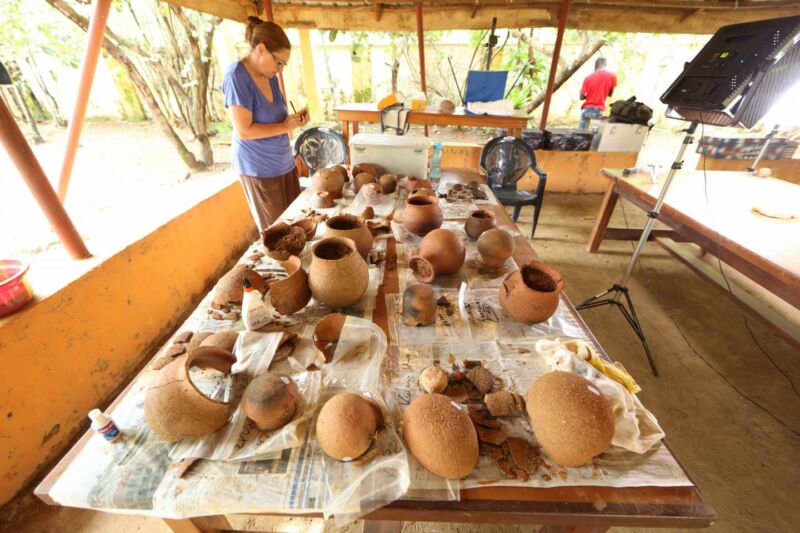Africa’s first Iron Age culture had a sweet tooth

Chemical traces of 3,500-year-old beeswax on central Nigerian potsherds shed light on an often invisible aspect of ancient diets-and a bit about what fueled the culture that launched Africa's Iron Age.
These farmers were super into metalTerms like Iron Age" only have meaning if you're talking about a particular place, since periods of technological innovation didn't begin at the same moment everywhere in the world. People in several regions discovered, at different times, how to turn iron ore into workable metal. Some cultures worked it out on their own, while others learned the new technology from neighbors, trading partners, or conquerors.
In sub-Saharan Africa, the Iron Age began sometime between 1000 and 550 BCE, and it began with the Nok people, a culture that sculpted elaborate terracotta figurines, farmed millet, and developed iron smelting. The first traces of Nok culture appear in Nigeria's archaeological record around 1500 BCE, and they don't vanish until 2,000 years later, around 500 CE. Archaeologists still aren't sure whether the Nok culture arose in Nigeria or whether the Nok people moved south from someplace like modern Mauritania, Mali, Niger, or Chad, where millet is an indigenous crop.
Read 17 remaining paragraphs | Comments